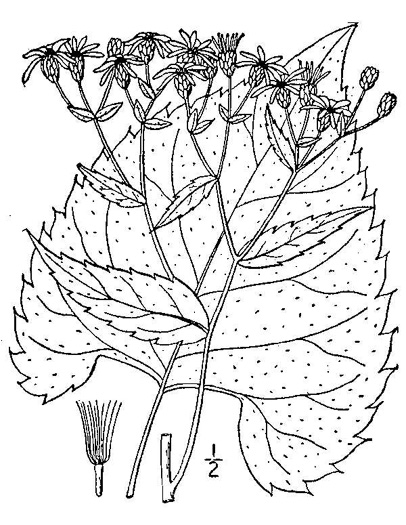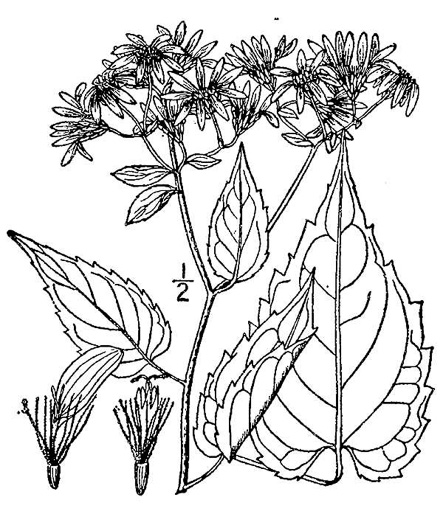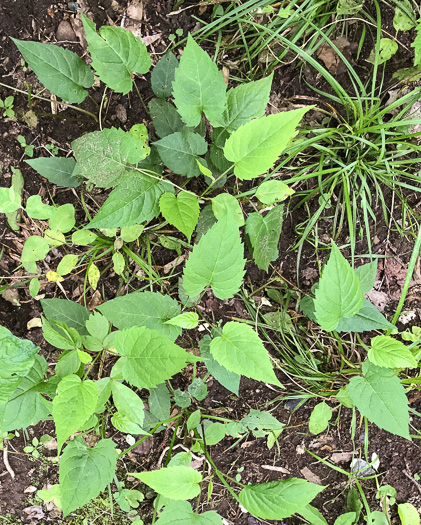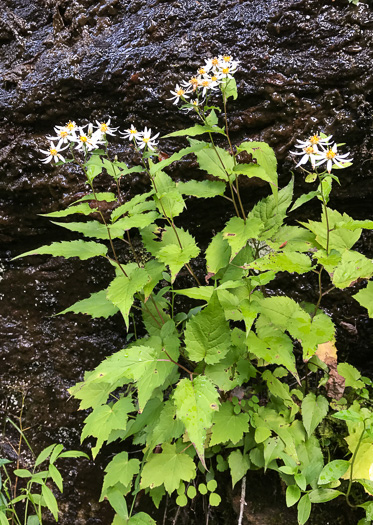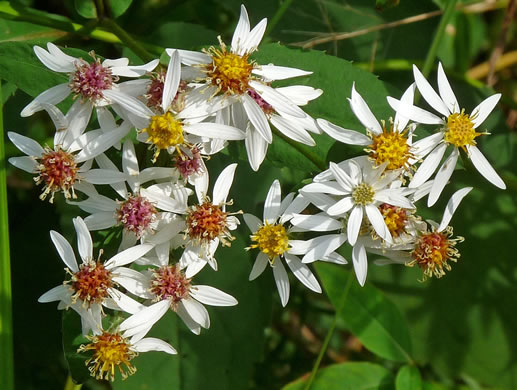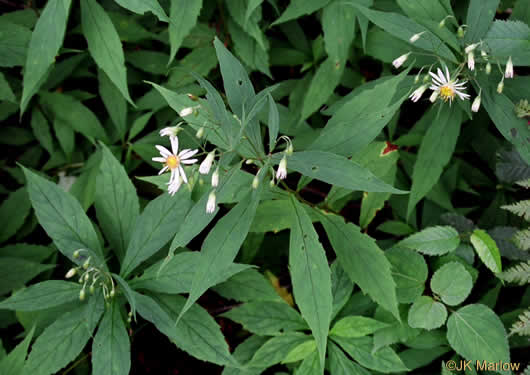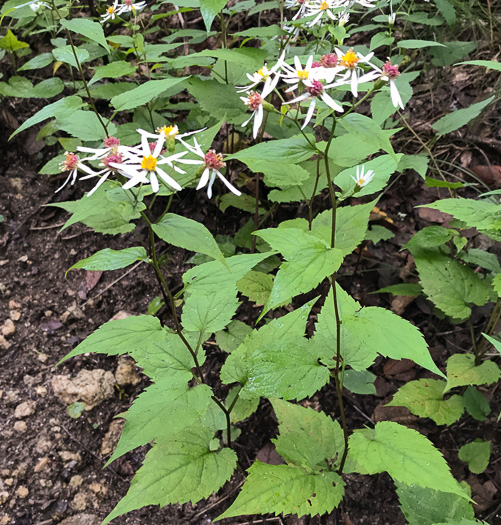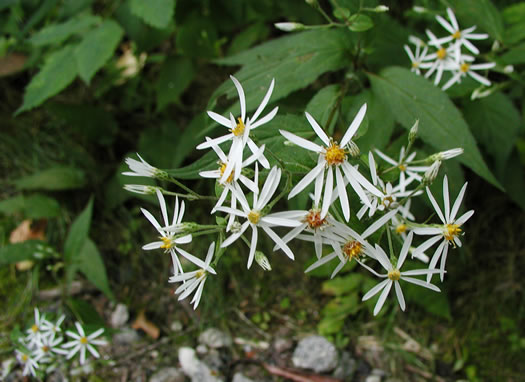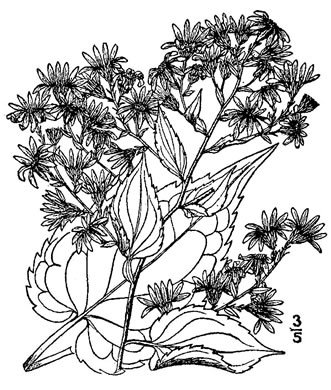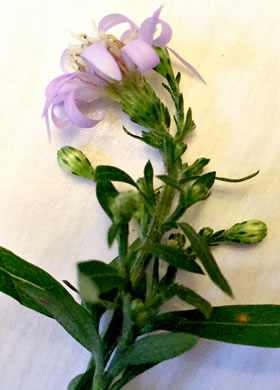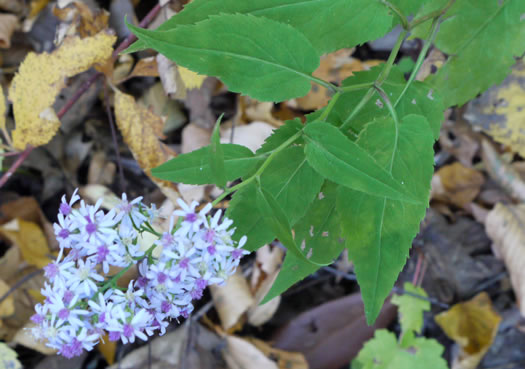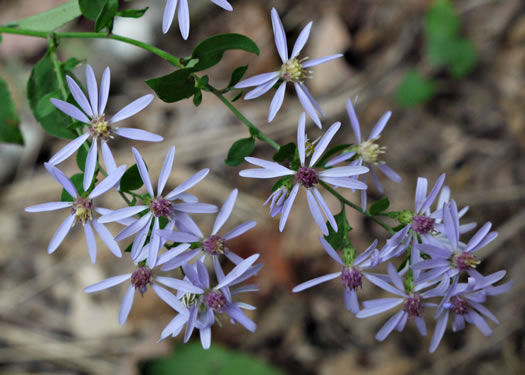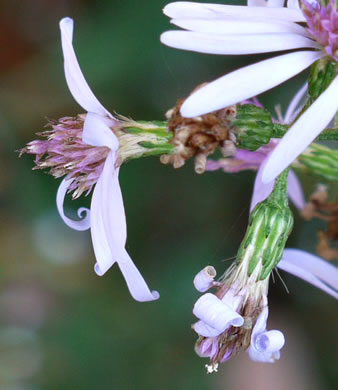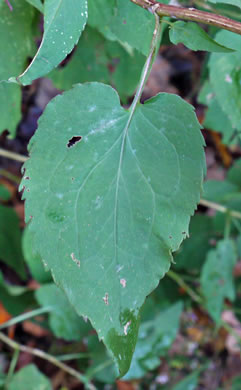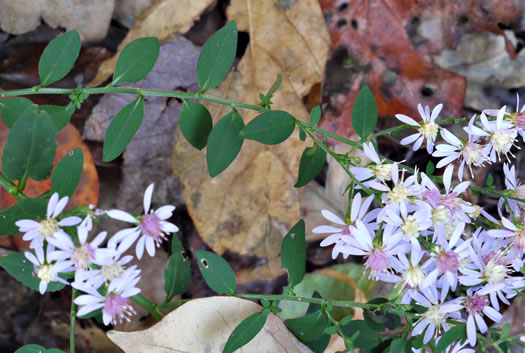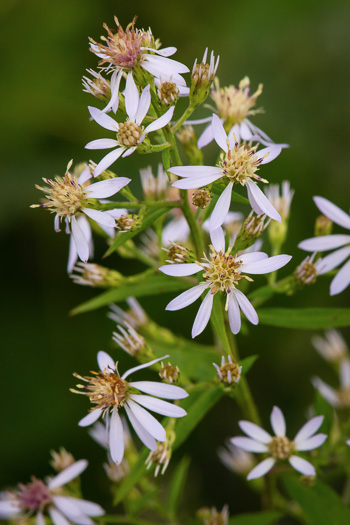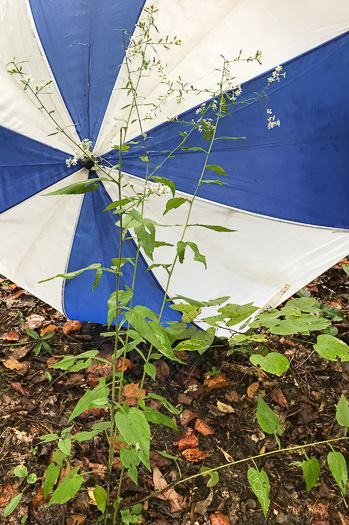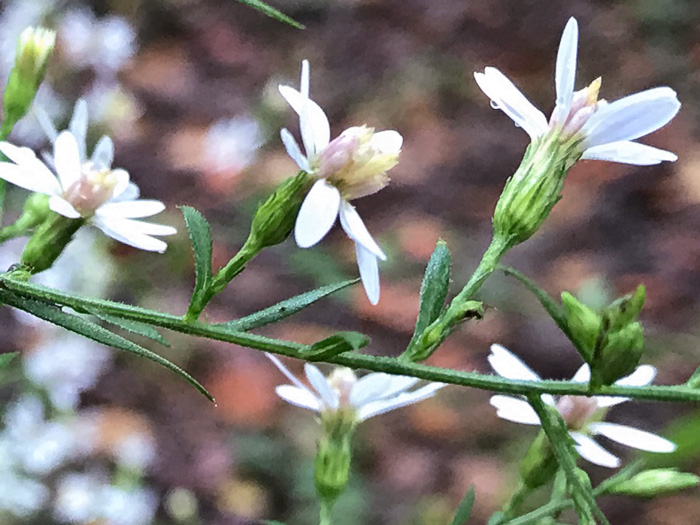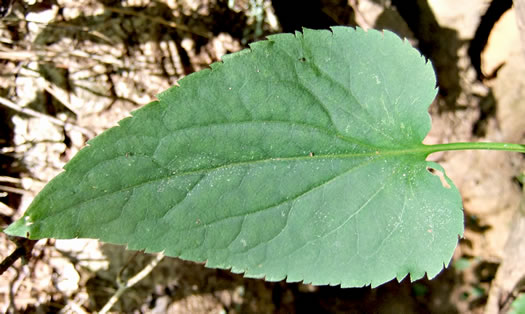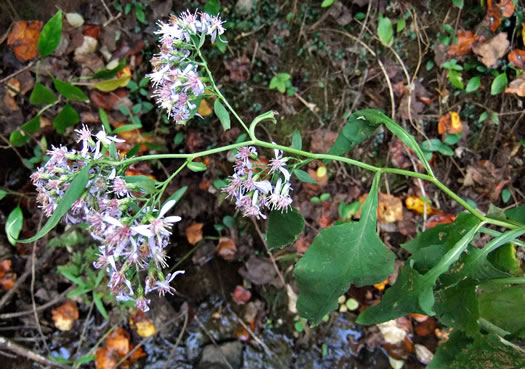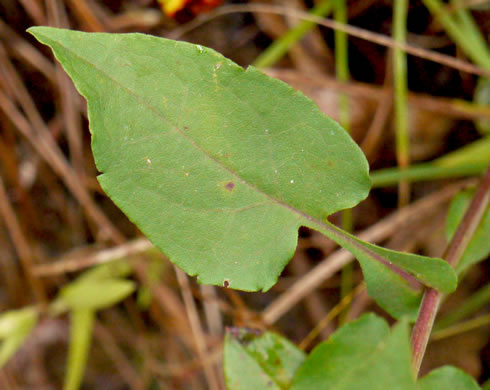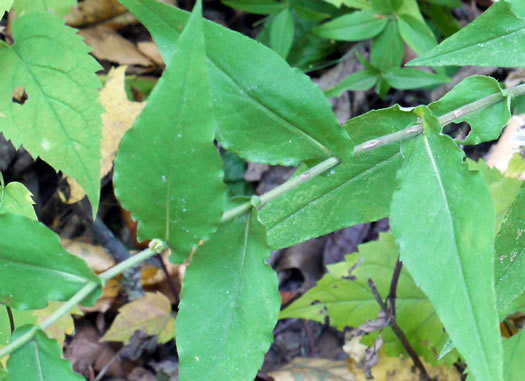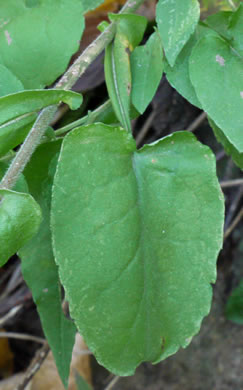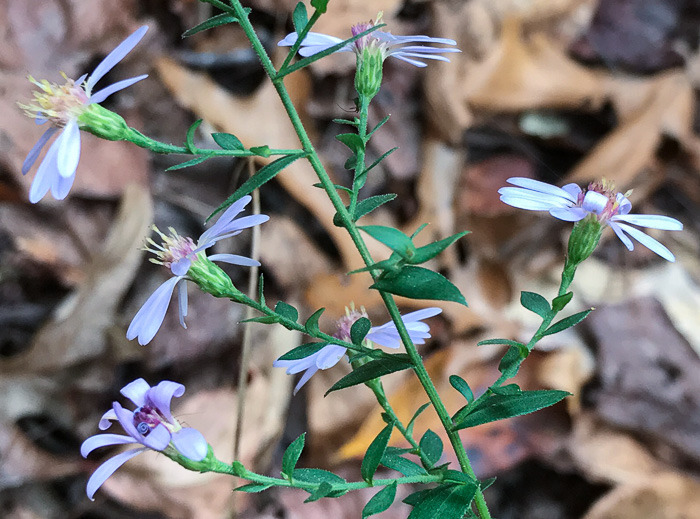Your search found 45 image(s) of asters with heart-shaped leaves.
To see larger pictures, click or hover over the thumbnails.
To go to the plant's detail page, click its name.
 Habitat: Nutrient-rich bottomlands and moist slopes in the lower Piedmont
Habitat: Nutrient-rich bottomlands and moist slopes in the lower Piedmont
Phyllaries acute, obtuse, or rounded at the apex, squarrose in life, per Weakley's Flora (2022).
Rays 12-20, bluish-lavender to white, 1.5-2cm long; disc flowers yellow, per Vascular Flora of the Carolinas (Radford, Ahles, & Bell, 1968).
Lower leaves long-petioled w truncate to cordate bases; upper reduced, sessile, per Vascular Flora of the Carolinas (Radford, Ahles, & Bell, 1968).
 Habitat: Moist to dryish forests, in NC mostly at moderate to high elevations, particularly in red oak forests on ridgetops
Habitat: Moist to dryish forests, in NC mostly at moderate to high elevations, particularly in red oak forests on ridgetops
Rhizomes long, the plants forming extensive clonal colonies, per Weakley's Flora (2023).
Basal leaves thick, long-stalked, with toothed cordate blade, per Wildflowers of the Southern Mountains (Smith, 1998).
Peduncles firm, densely stipitate-glandular. Phyllaries 5-6 series, appressed, strongly unequal, per Flora of North America.
Inflorescence a flat-topped corymb, rarely with fewer than 17 heads. Rays 12-20, white to lavender, per Vascular Flora of the Carolinas (Radford, Ahles, & Bell, 1968).
Branches of the inflorescence glandular-pubescent, per Weakley's Flora (2023).
Bracts light green, oblong to oblanceolate, dark green ascending apex, stipitate-glandular, ciliate, per Vascular Flora of the Carolinas (Radford, Ahles, & Bell, 1968).
 Habitat: Moist to fairly dry forests and woodlands
Habitat: Moist to fairly dry forests and woodlands
Leaves well-stalked, coarsely sharp-toothed, and cordate-ovate, per Wildflowers of the Southern Mountains (Smith, 1998).
Phyllaries in 4-5 series, strongly unequal, green zones distal 1/2-1/3, margins narrowly scarious, per Flora of North America.
Often confused w E. chlorolepis, E. schreberi, or Symphyotrichum cordifolium, per Flora of North America.
 Habitat: Northern hardwood forests, spruce-fir forests
Habitat: Northern hardwood forests, spruce-fir forests
Leaves ovate to lance-ovate or the upper elliptic to lanceolate, acuminate, per Vascular Flora of the Carolinas (Radford, Ahles, & Bell, 1968).
Usually found above 1200m (vs. A. divaricatus usually found below 1200m), per The Taxonomic Status and Probable Origin of Aster chlorolepis, a Southern Appalachian Endemic (Lamboy, 1992).
Rays white, usually 10 or more, 1.5-2cm long, disc flowers yellow or red, per Vascular Flora of the Carolinas (Radford, Ahles, & Bell, 1968).
 Habitat: Rich forests, shaded roadbanks
Habitat: Rich forests, shaded roadbanks
Phyllaries with lanceolate diamond-shaped blaze (2-3x long as wide), per Weakley's Flora (2015).
Flowers in a paniculate inflorescence, heads 1/2-3/4" wide, per Wildflowers of the Southern Mountains (Smith, 1998).
Ray florets (8)10-16(20). Disc florets cream or light yellow becoming purple, per Flora of North America.
Basal & lower cauline leaves toothed, with slender petioles & cordate bases, per Wildflowers of the Southern Mountains (Smith, 1998).
Distalmost leaves usually sessile or subsessile, margins serrate or entire, per Flora of North America.
 Habitat: Mesic to dry-mesic forests
Habitat: Mesic to dry-mesic forests
 Habitat: Moist to dry forests, fields, and roadbanks
Habitat: Moist to dry forests, fields, and roadbanks
Involucral bracts with green band along midrib for nearly their entire length, per Vascular Flora of the Carolinas (Radford, Ahles, & Bell, 1968).
Basal leaves shallowly cordate to truncate, per Weakley's Flora (2015).
 Habitat: Dry, rocky slopes; rock outcrops in wooded situations, calcareous hammocks (in FL)
Habitat: Dry, rocky slopes; rock outcrops in wooded situations, calcareous hammocks (in FL)
 Habitat: Dry forests, woodlands, glades, roadbanks
Habitat: Dry forests, woodlands, glades, roadbanks
[continued] ... petiolate, petiole strongly dilated to a cordate-clasping base, per Weakley's Flora.
Phyllaries appressed, green blaze lanceolate to elongate diamond-shaped, per Weakley's Flora (2015).
Bracts pale with green diamond-shaped band near apex or along entire midrib, per Vascular Flora of the Carolinas (Radford, Ahles, & Bell, 1968).


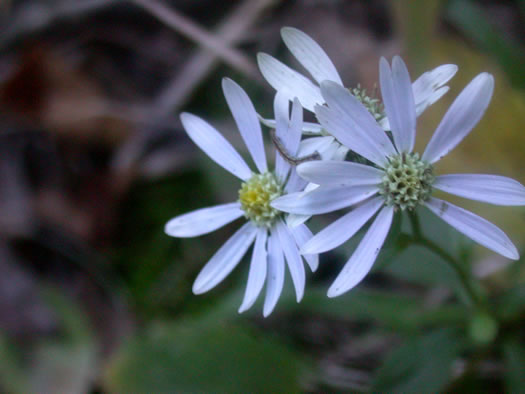
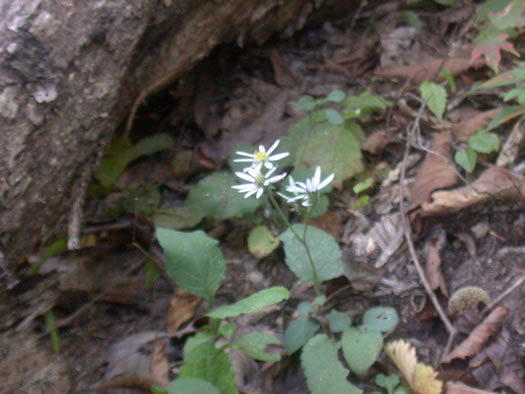
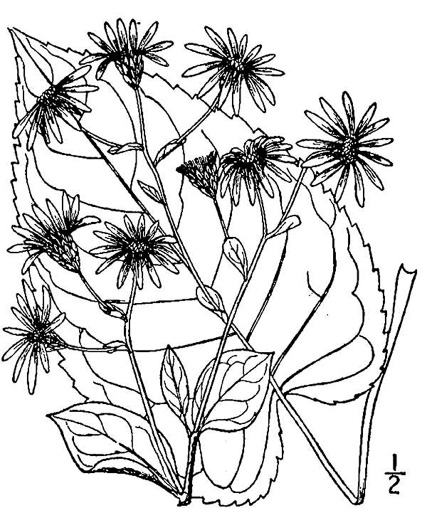
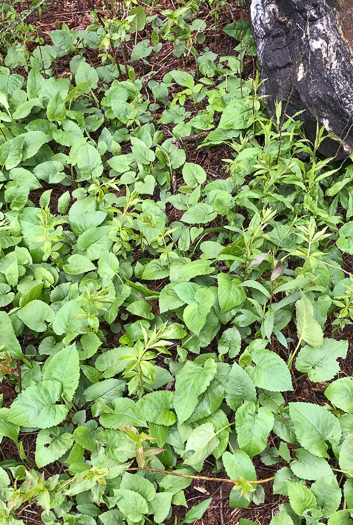
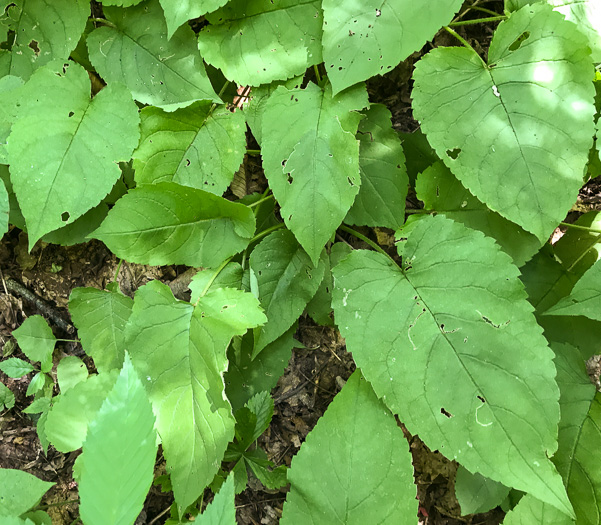
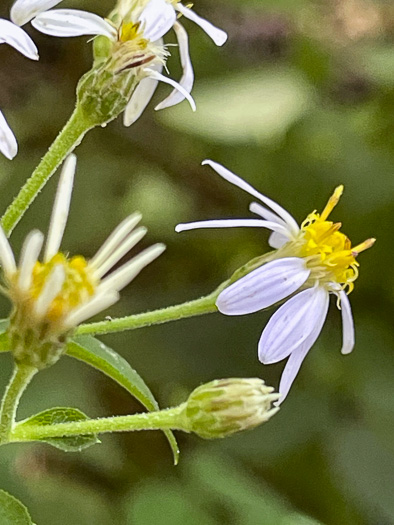
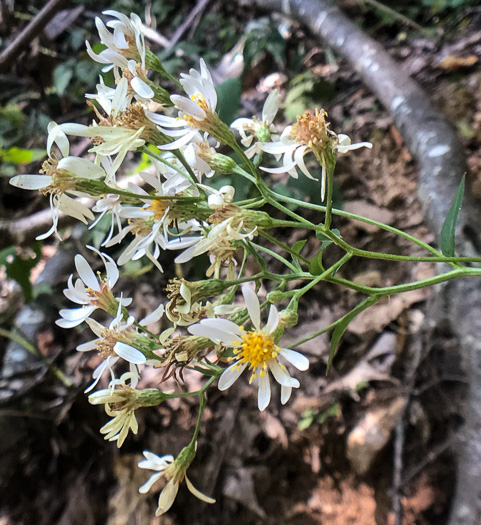

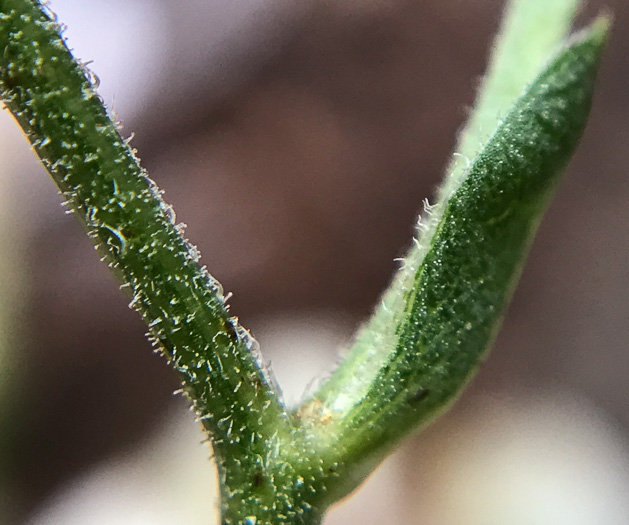
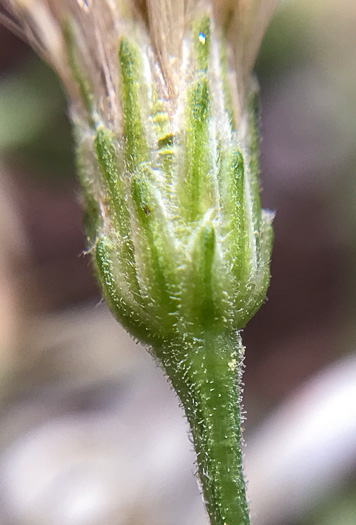


 Habitat: Mesic forests and seepage slopes
Habitat: Mesic forests and seepage slopes